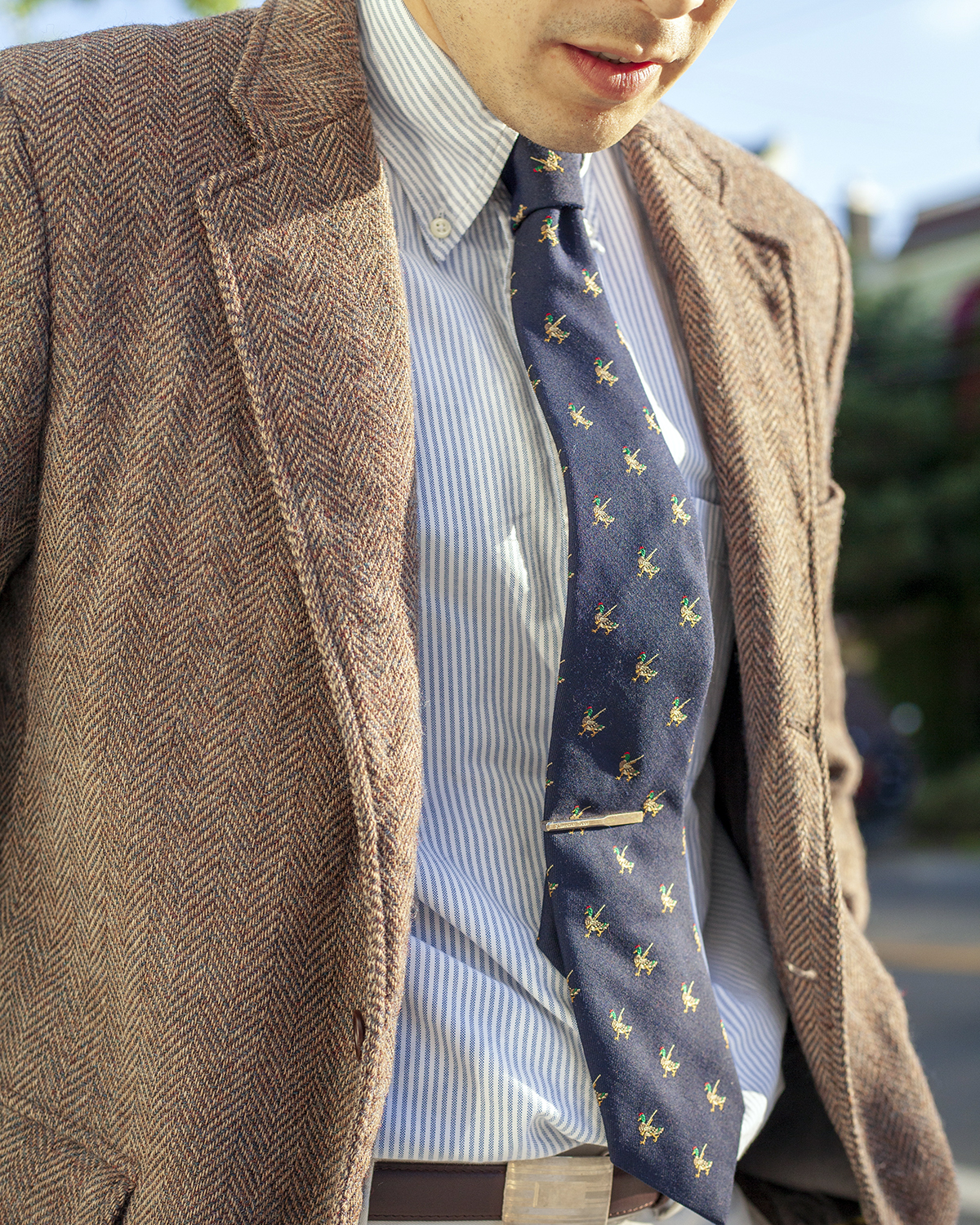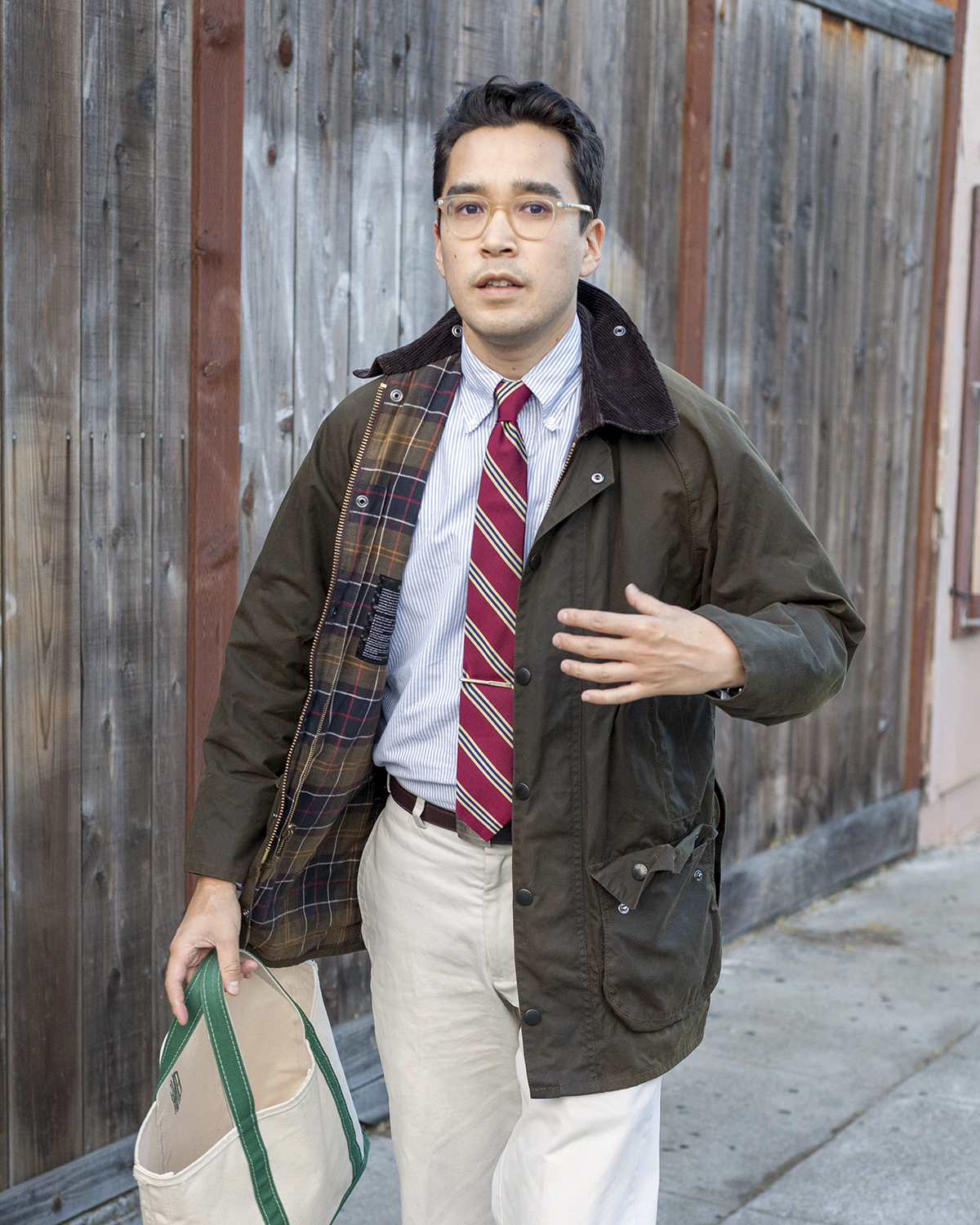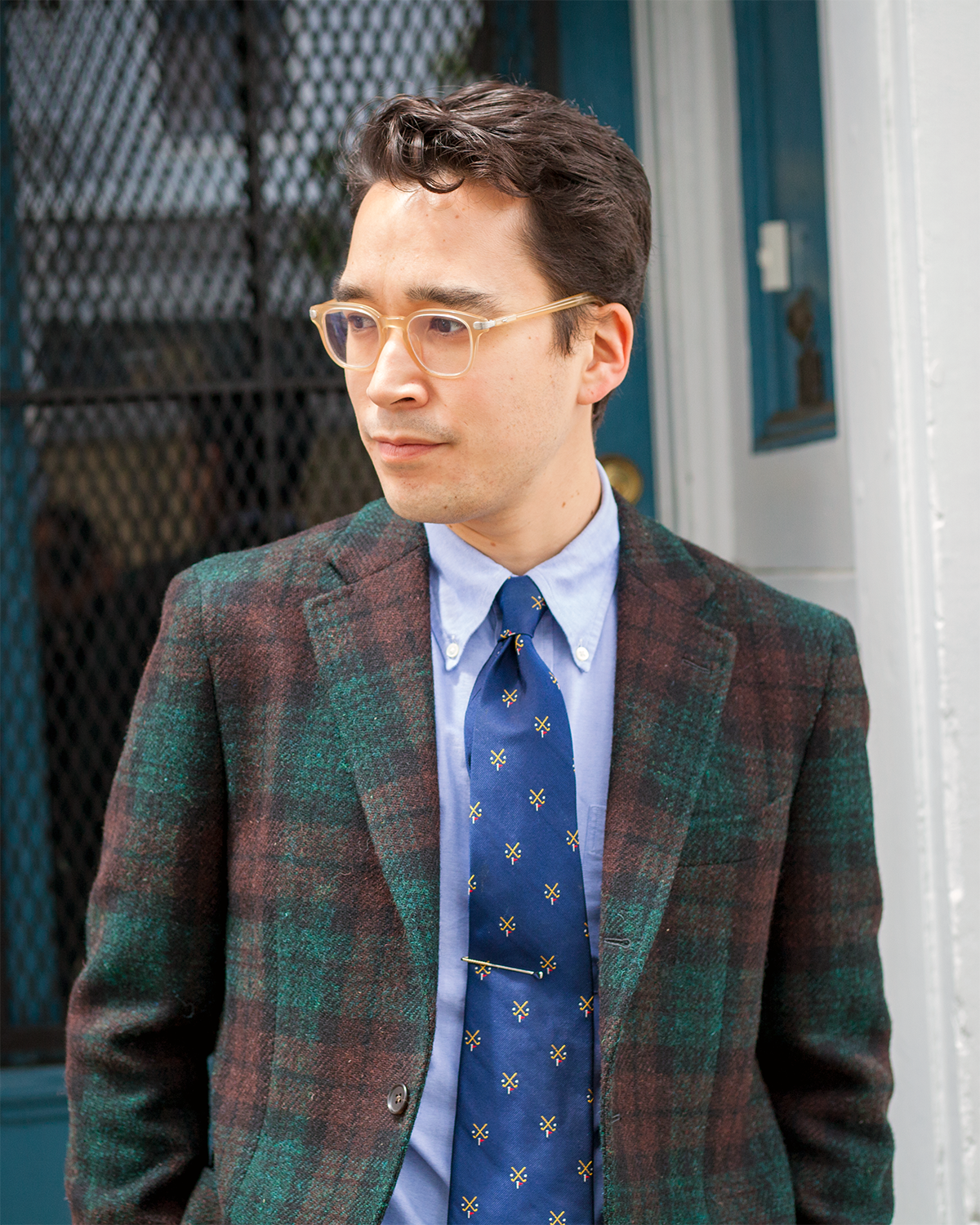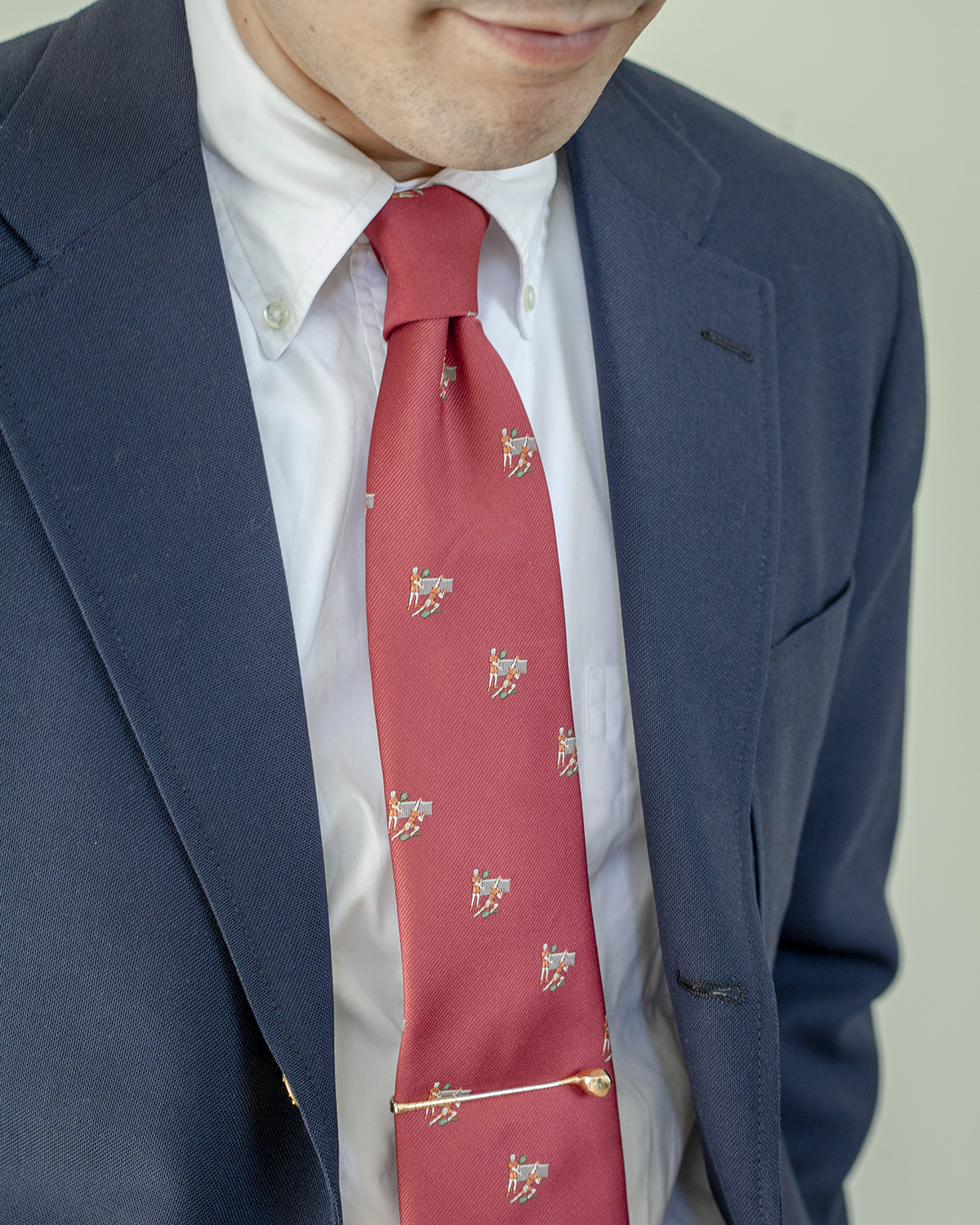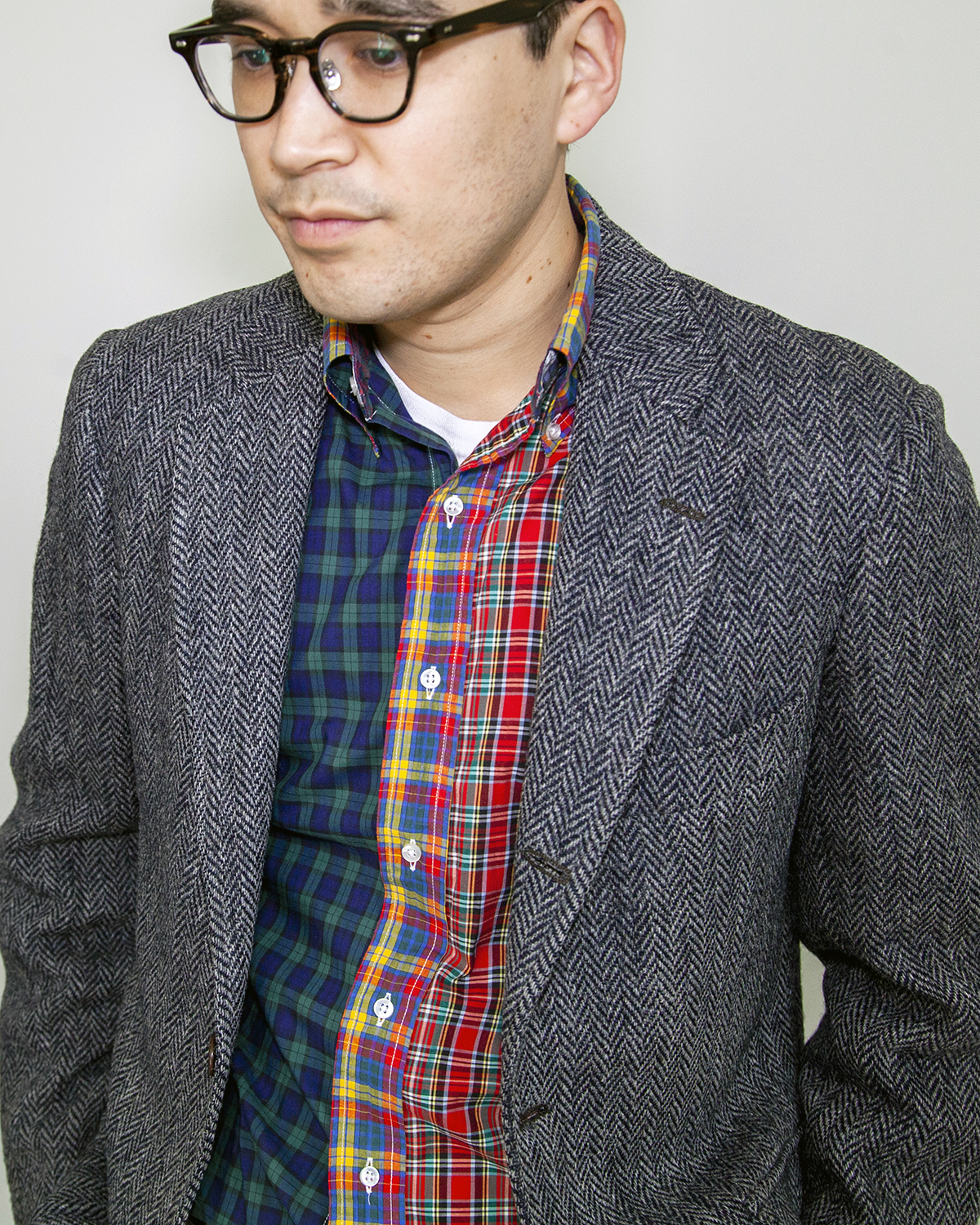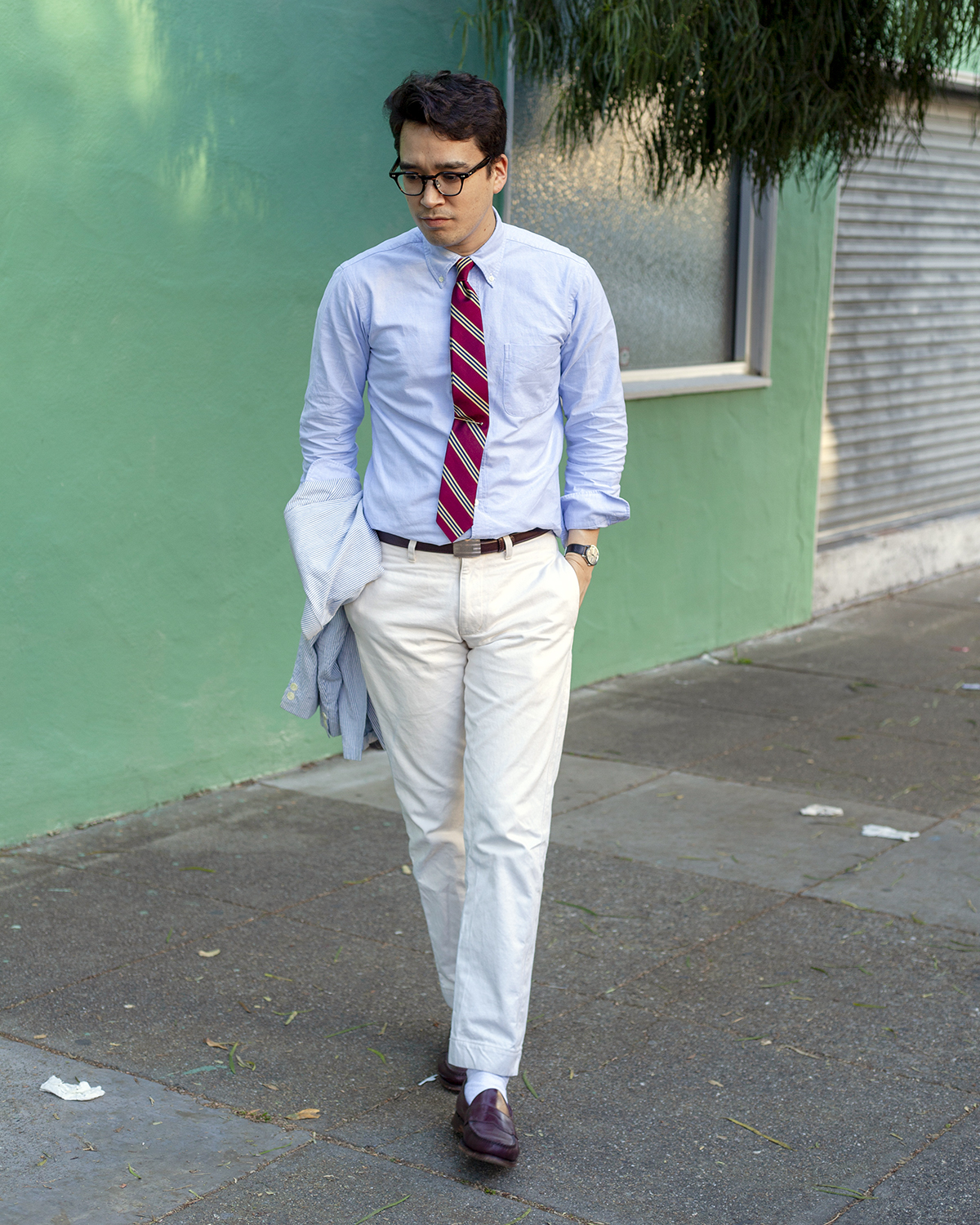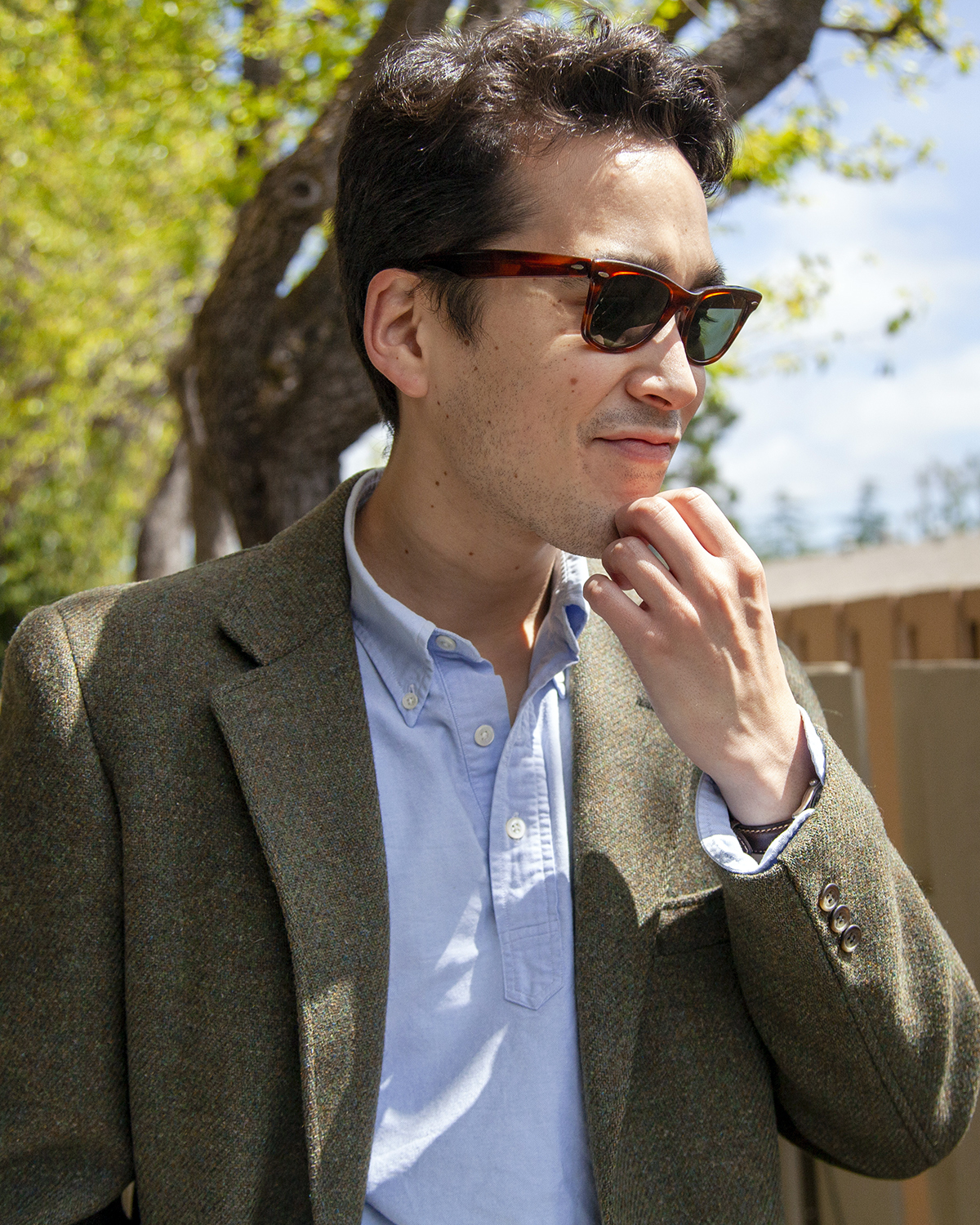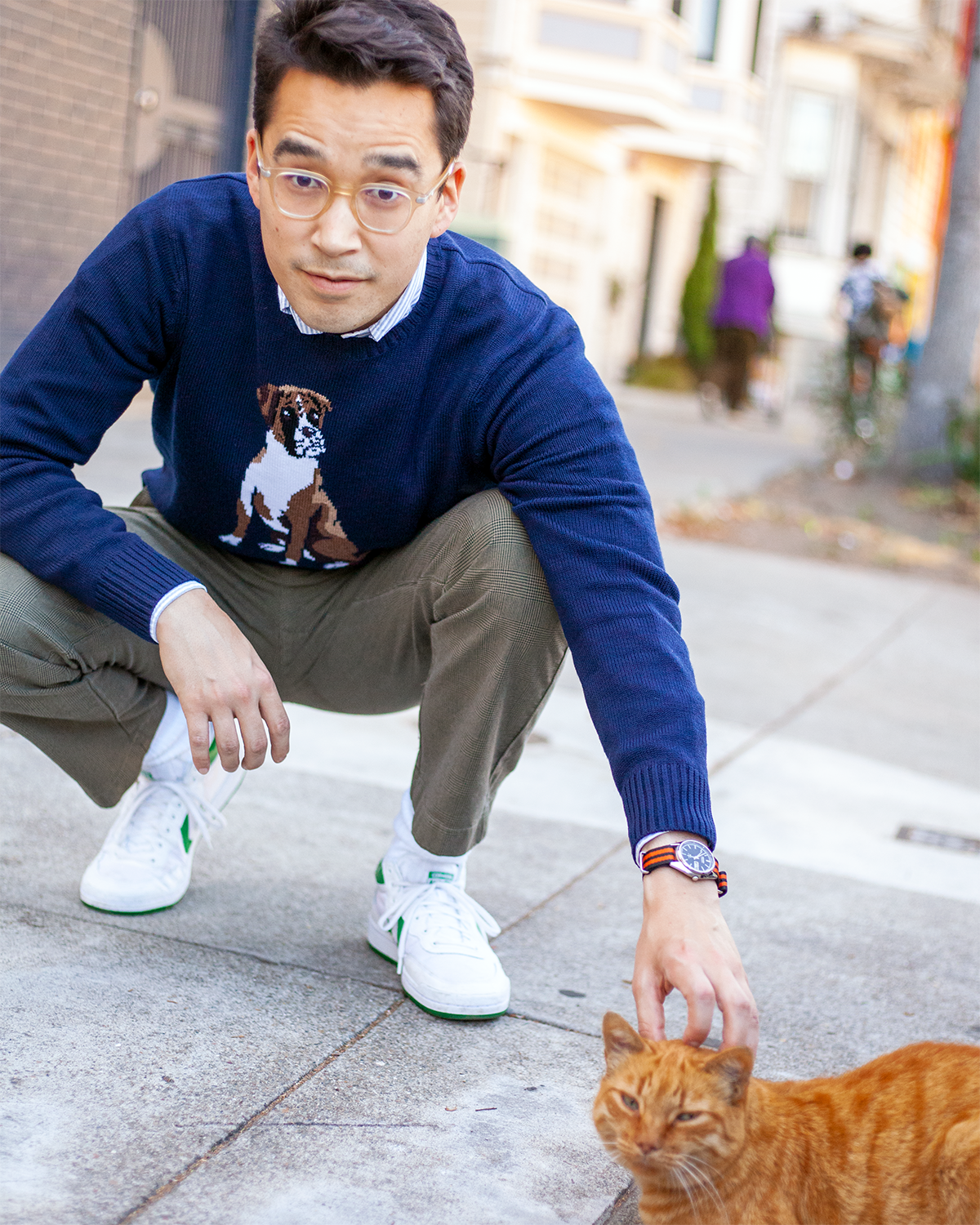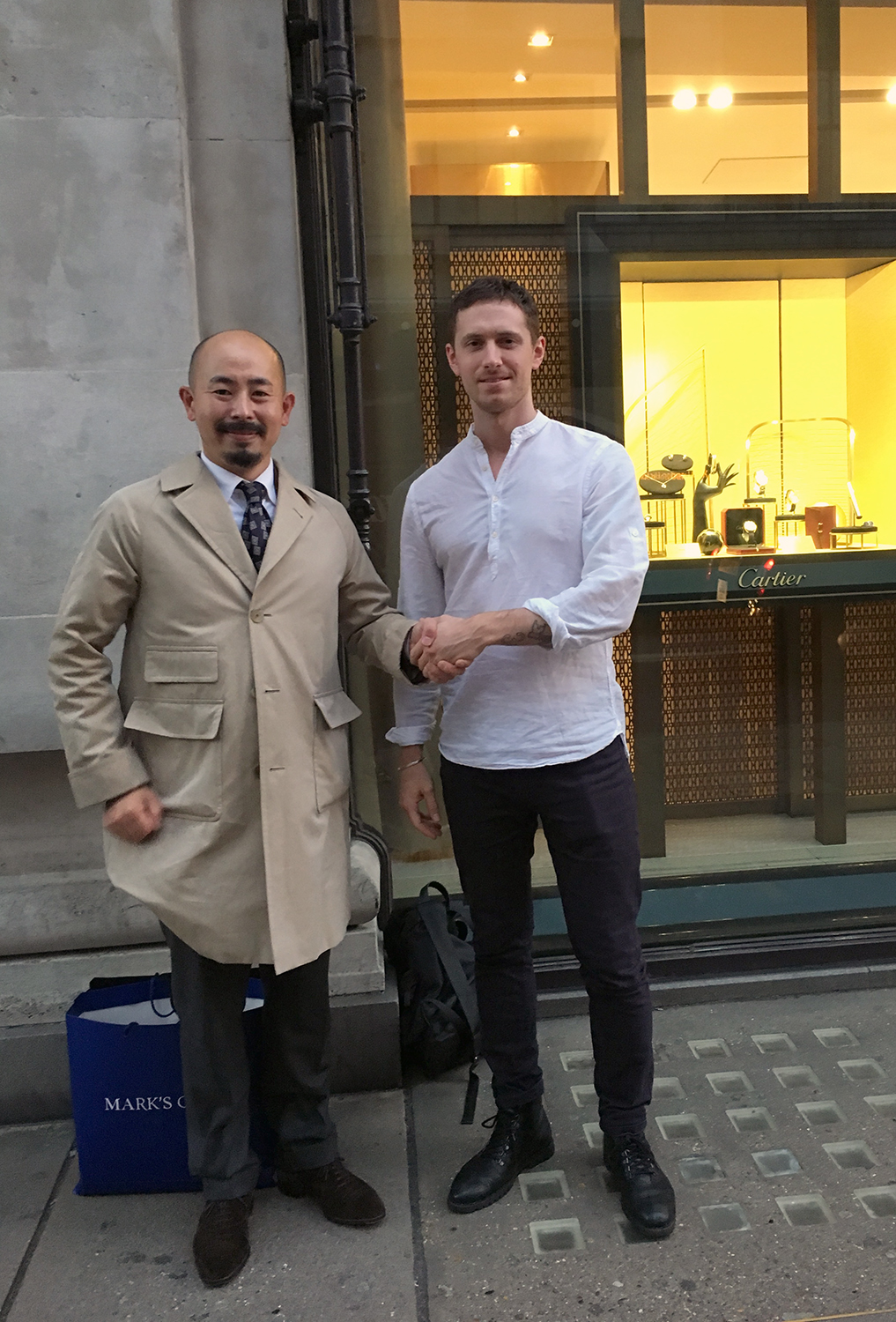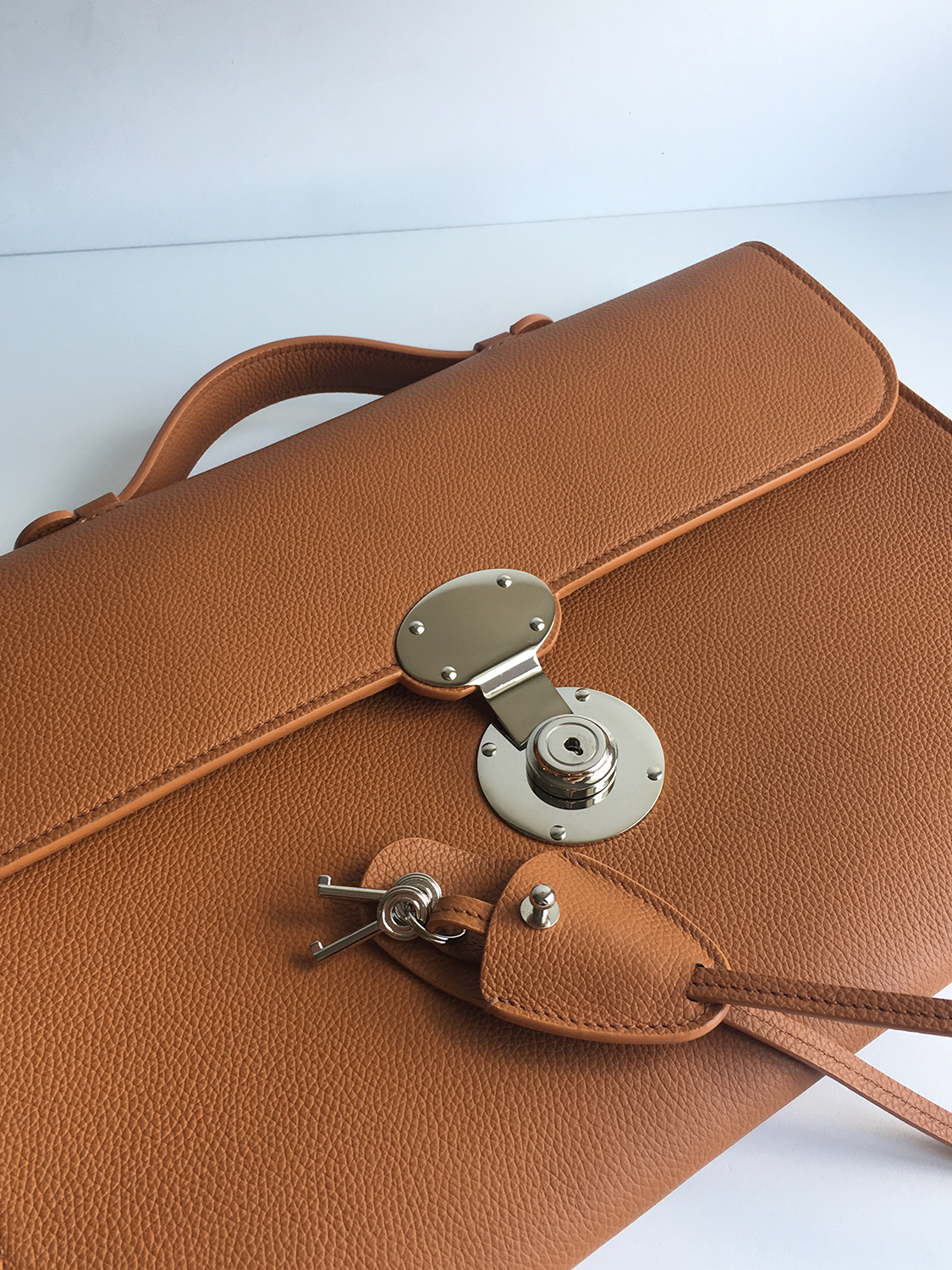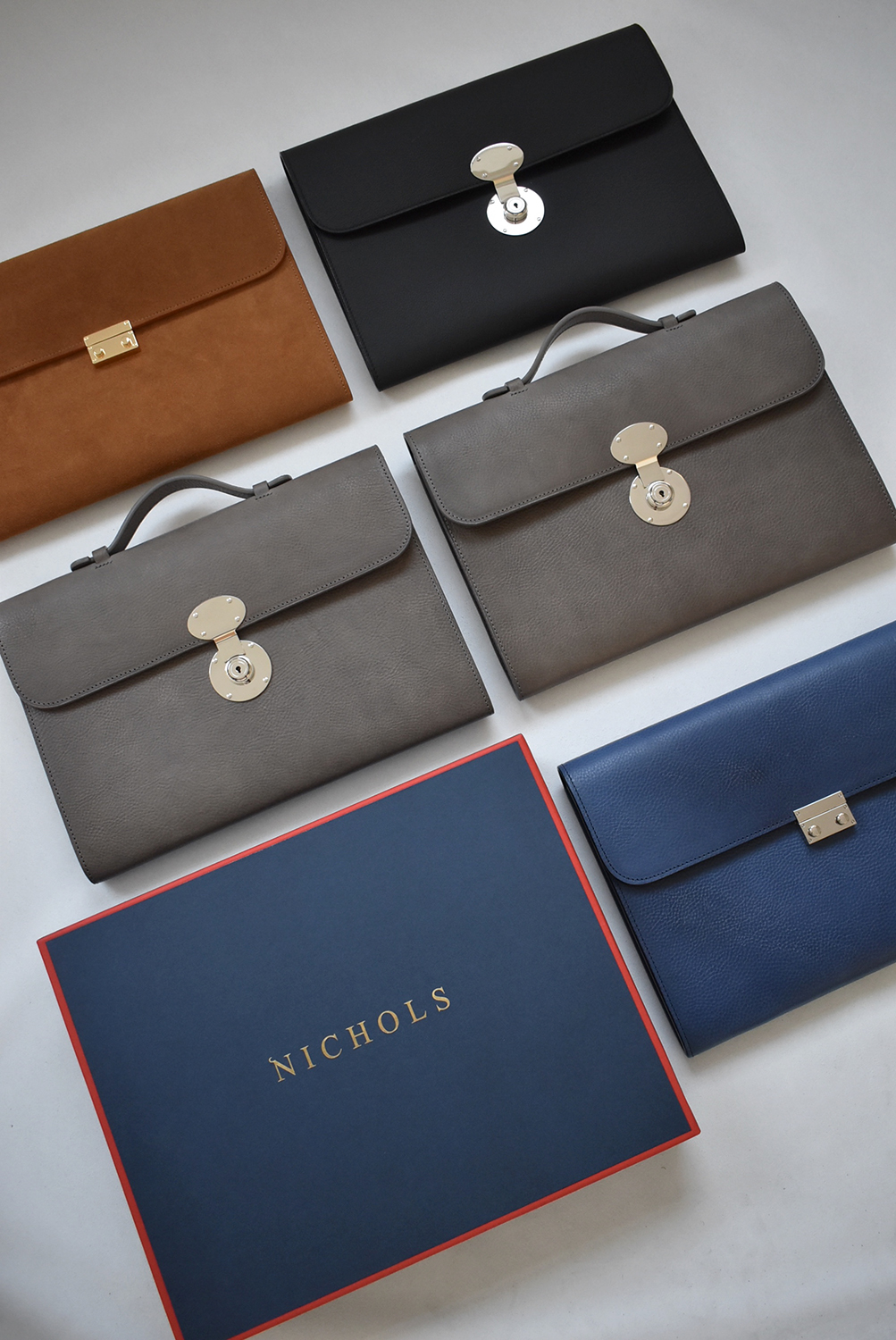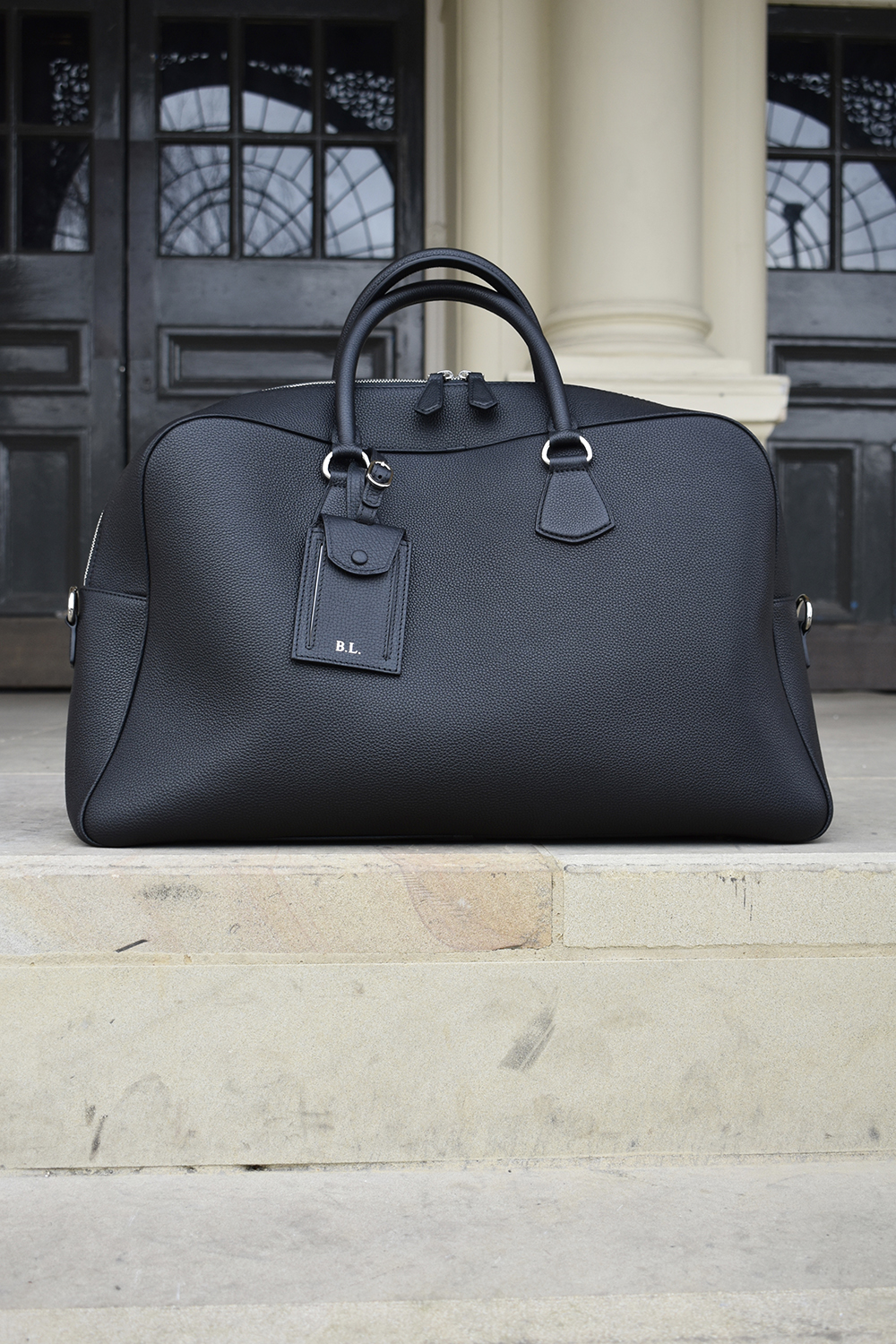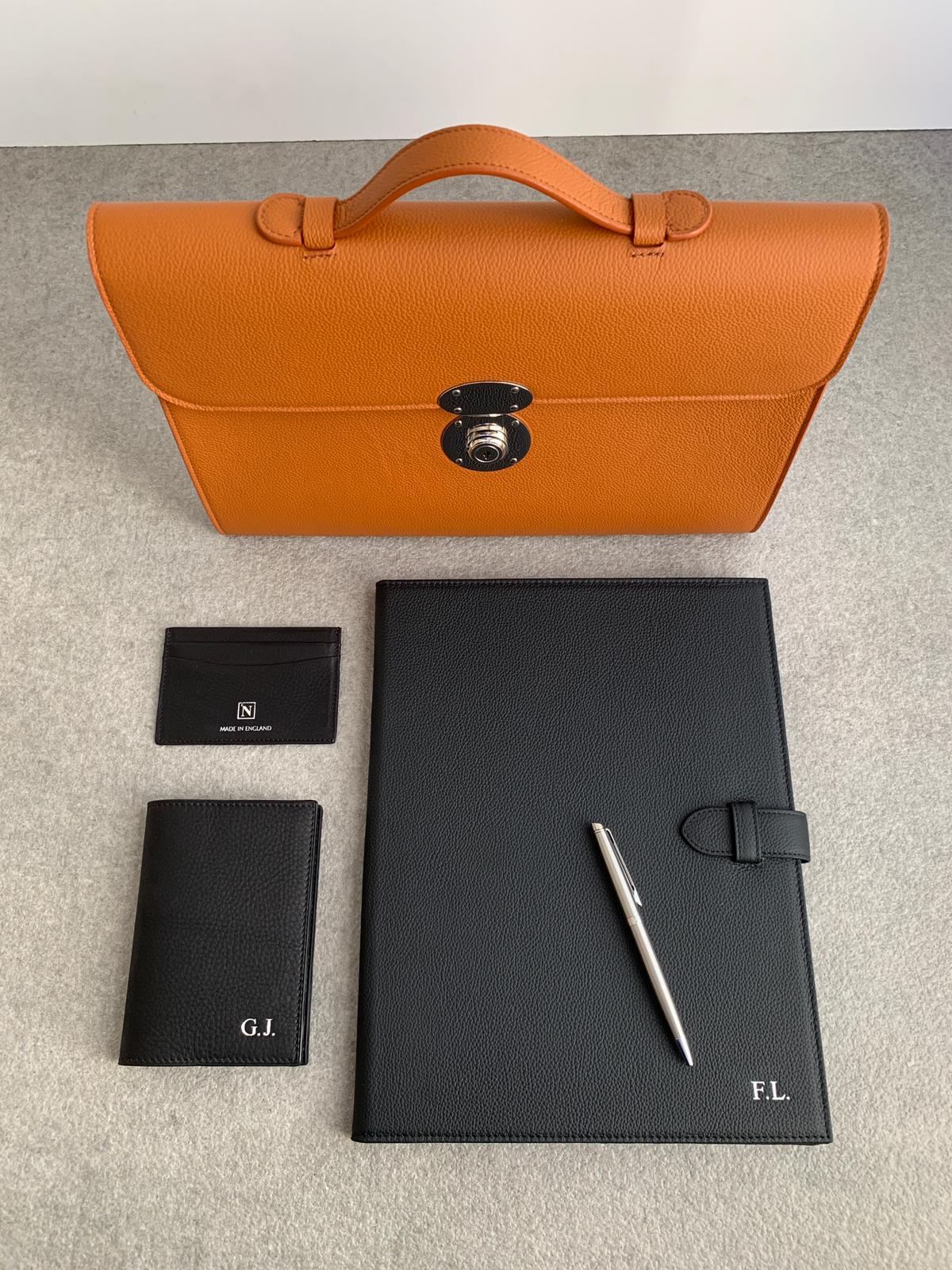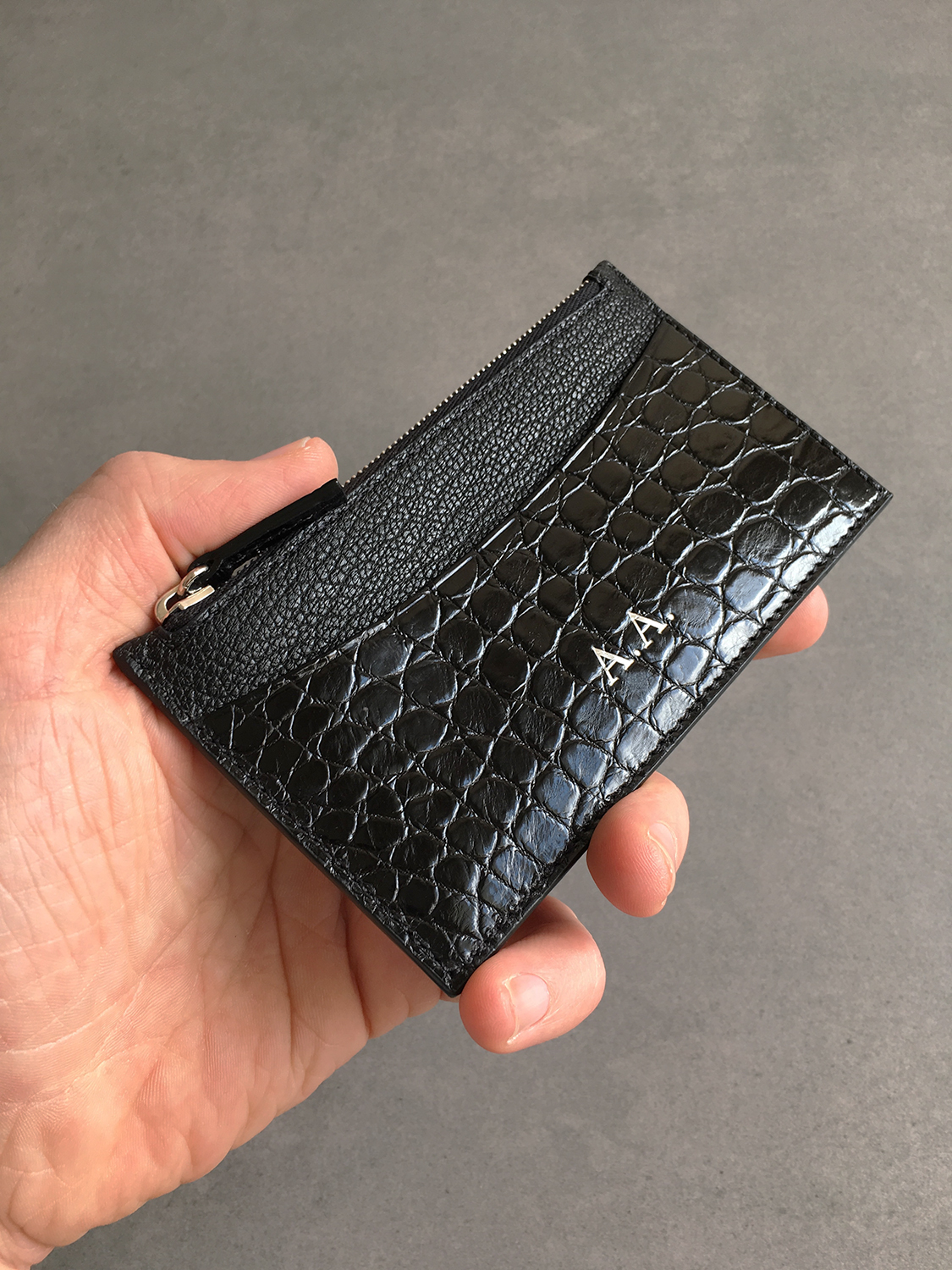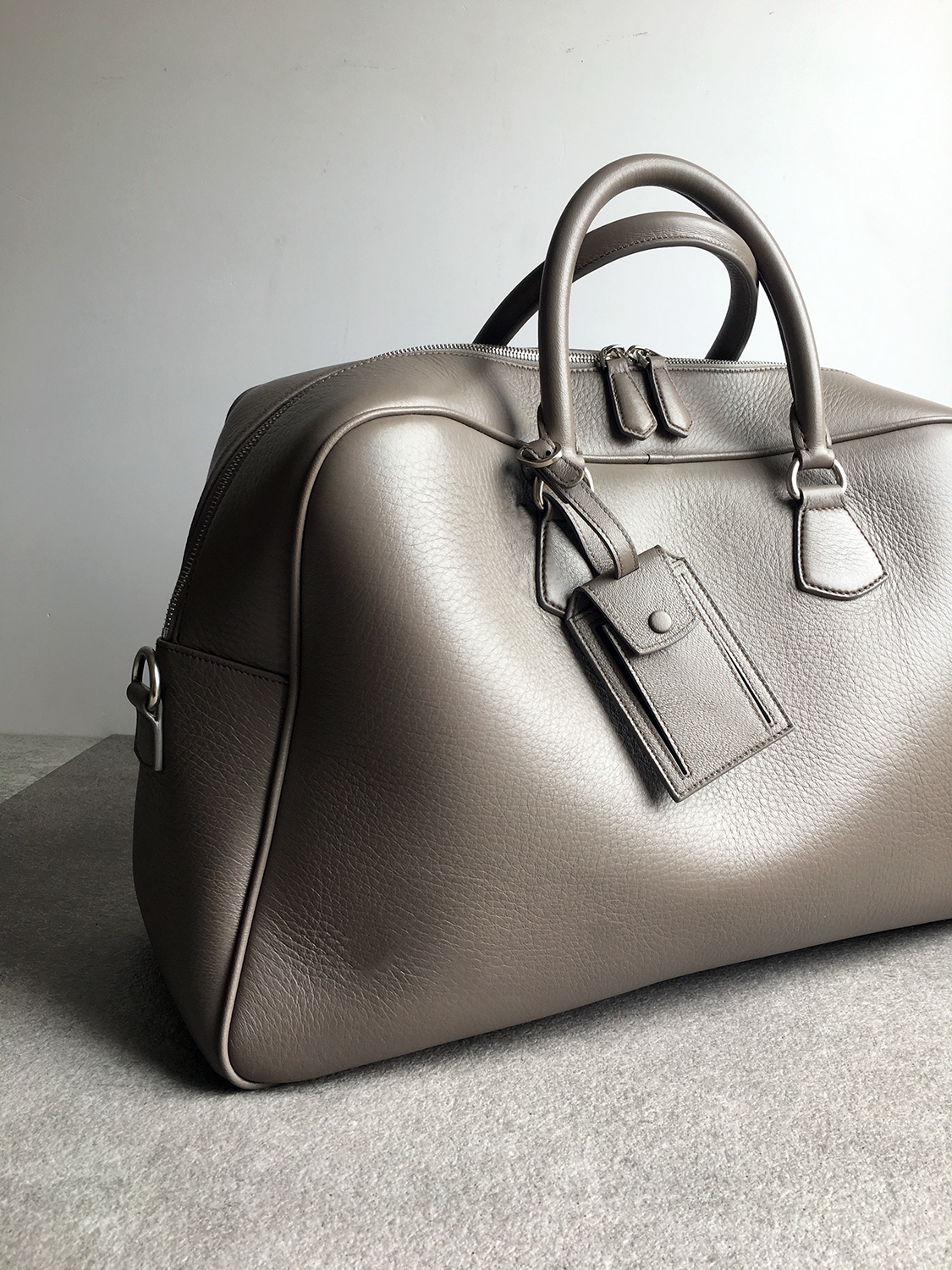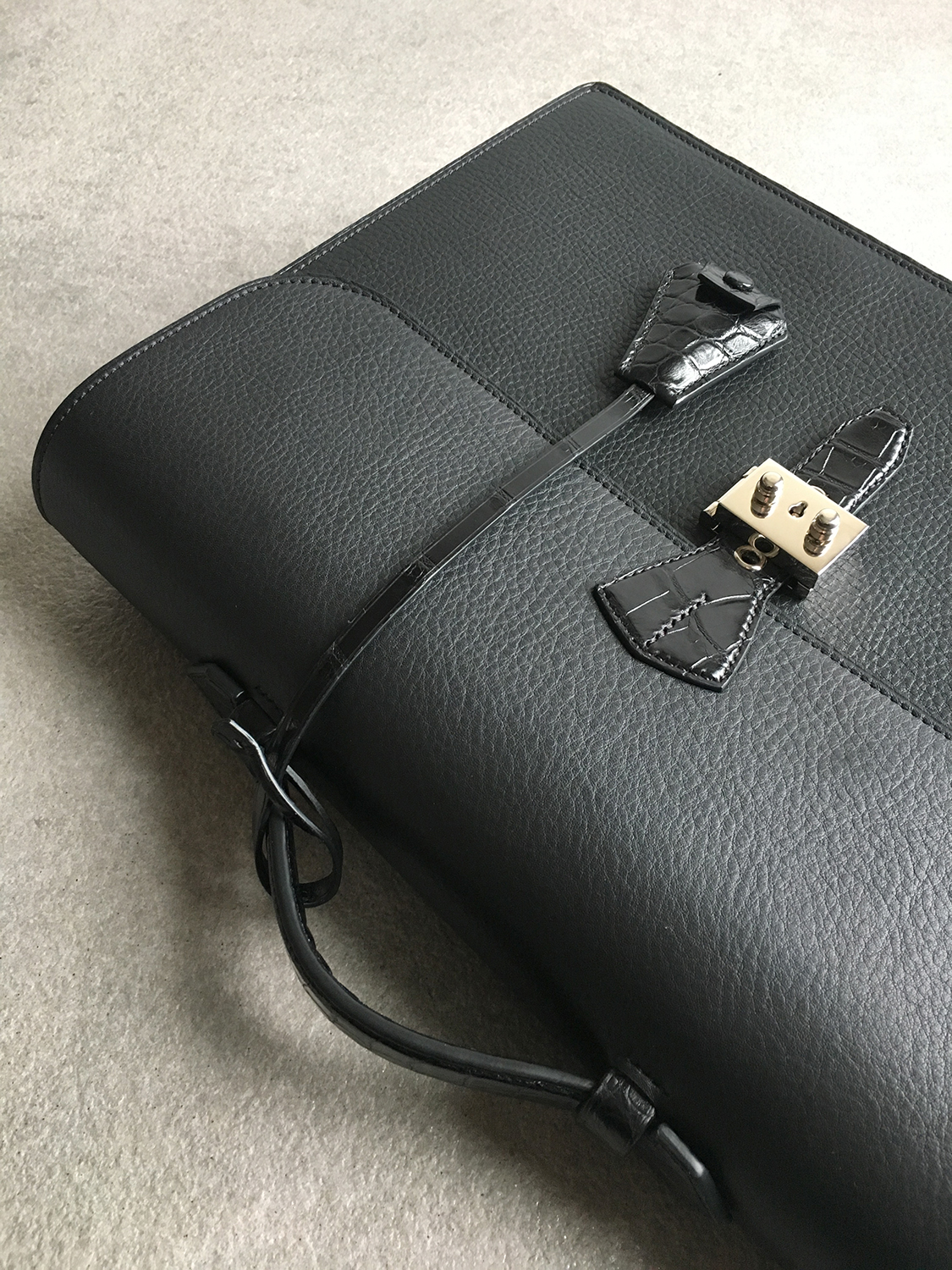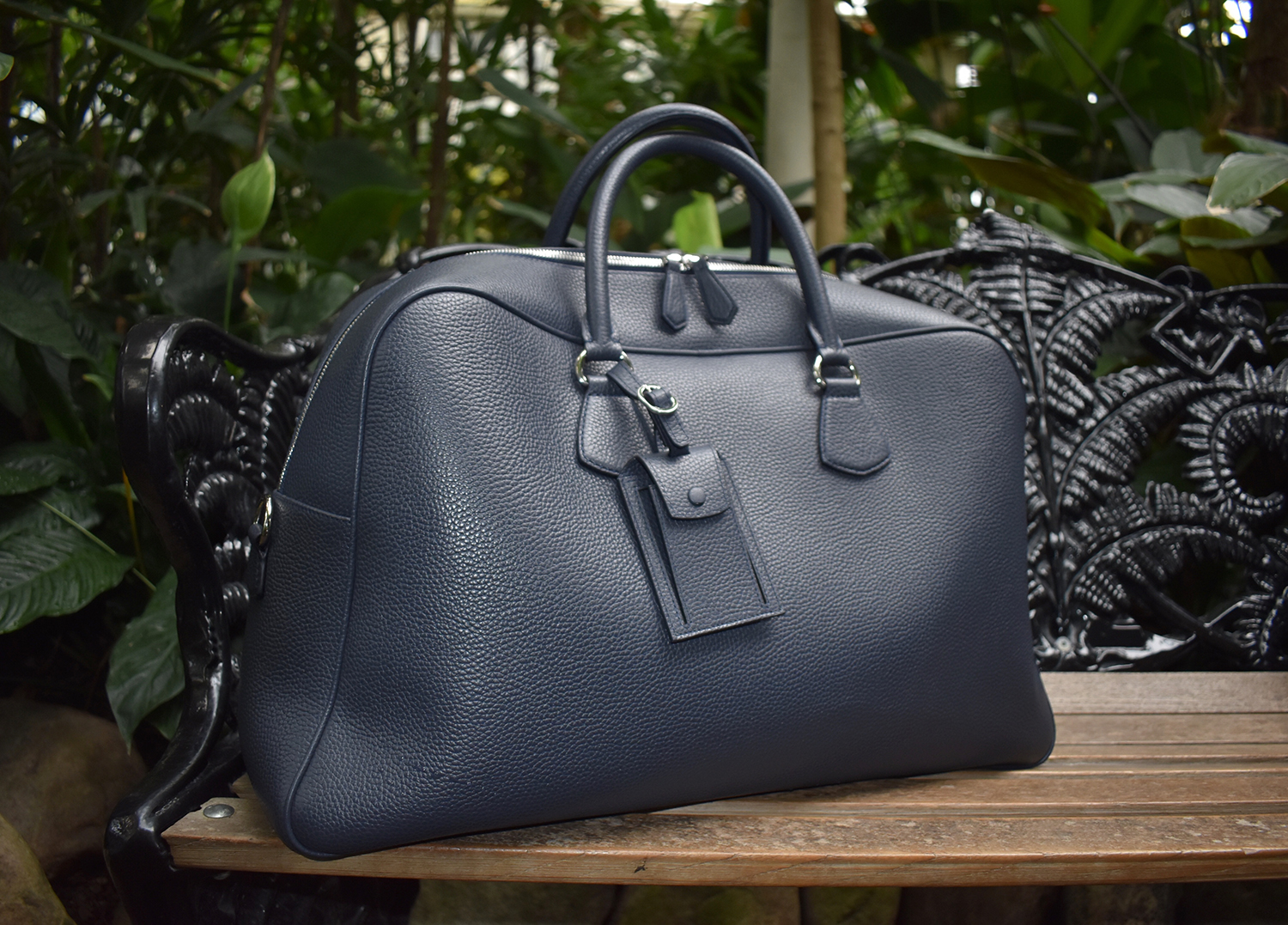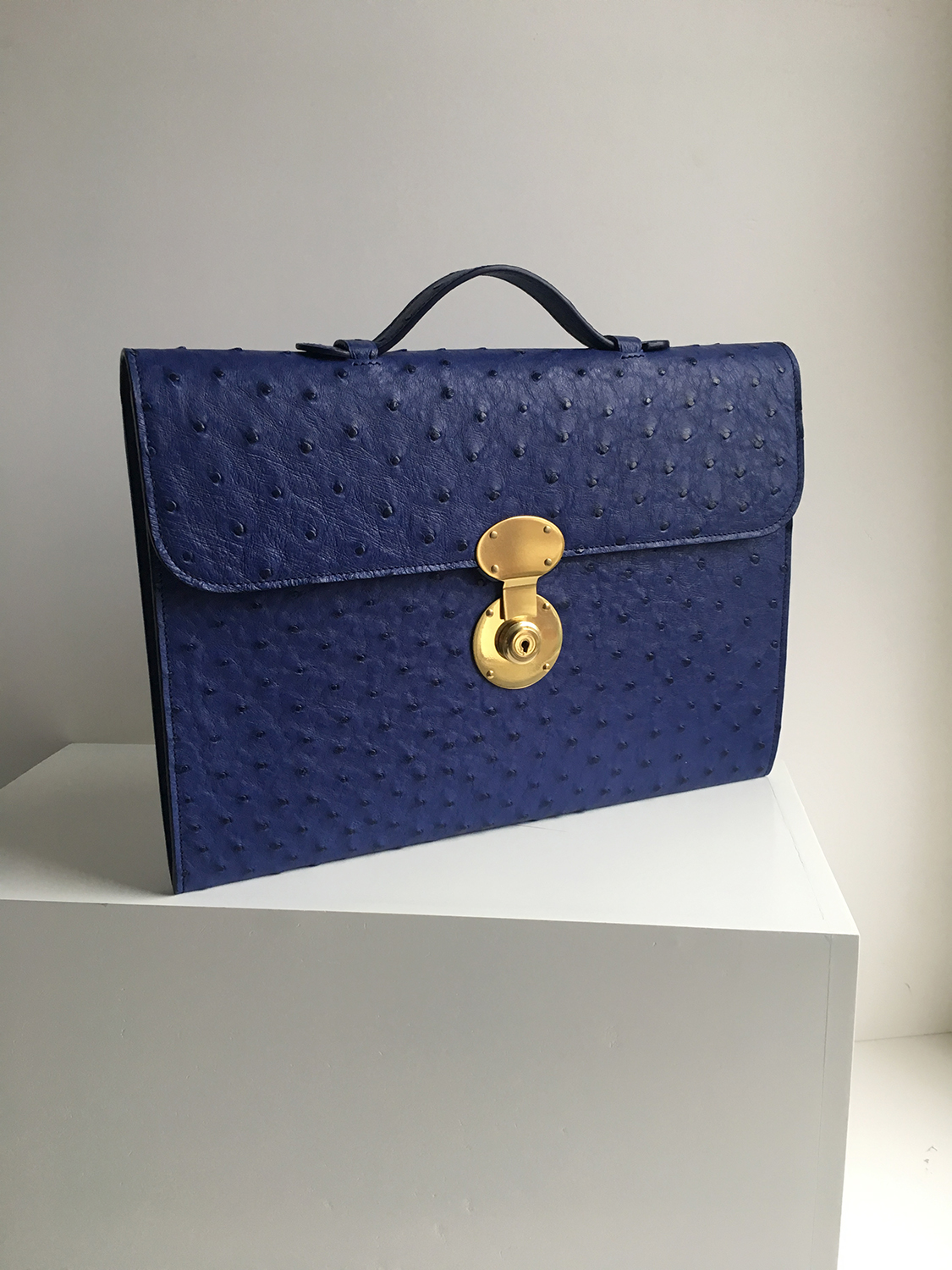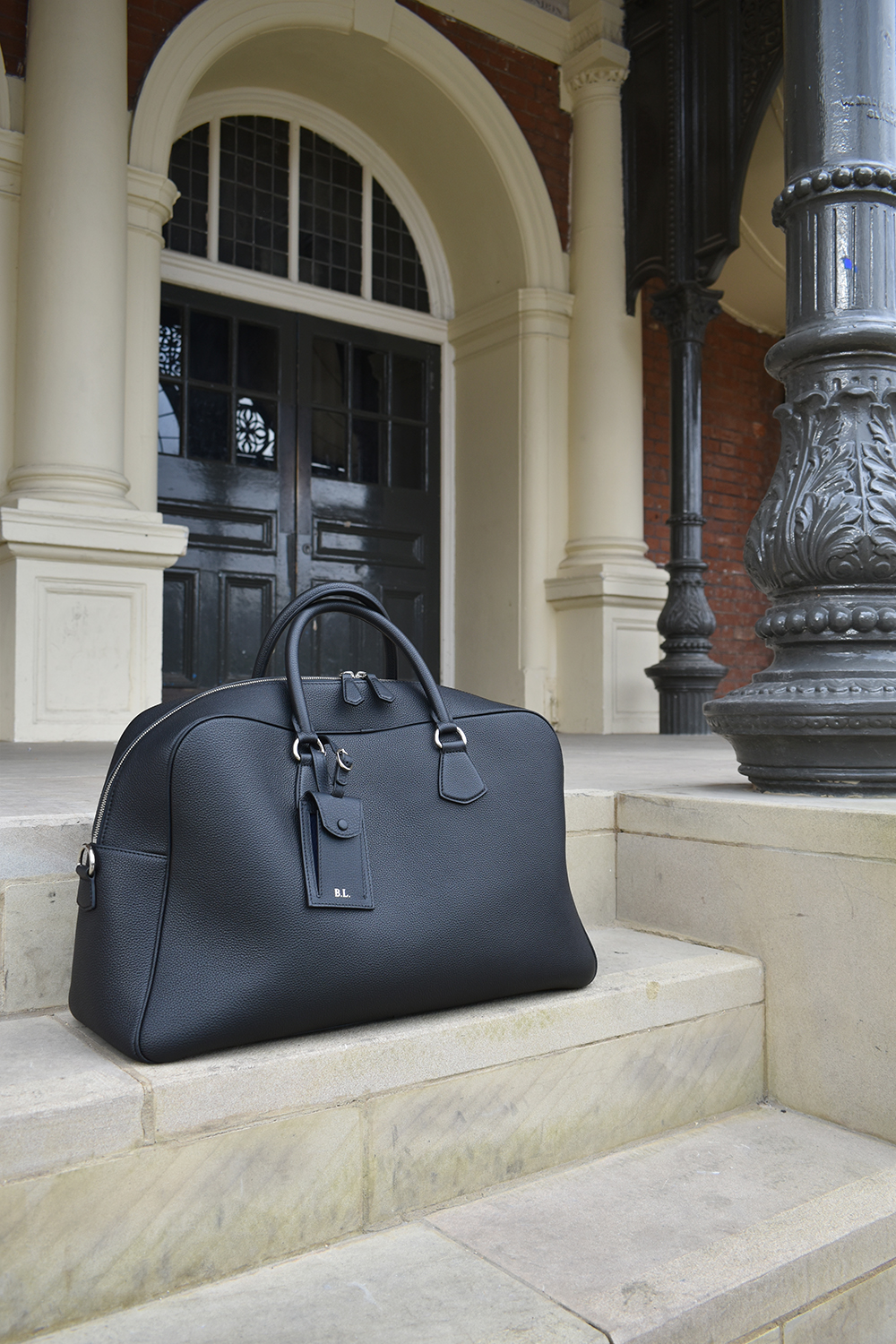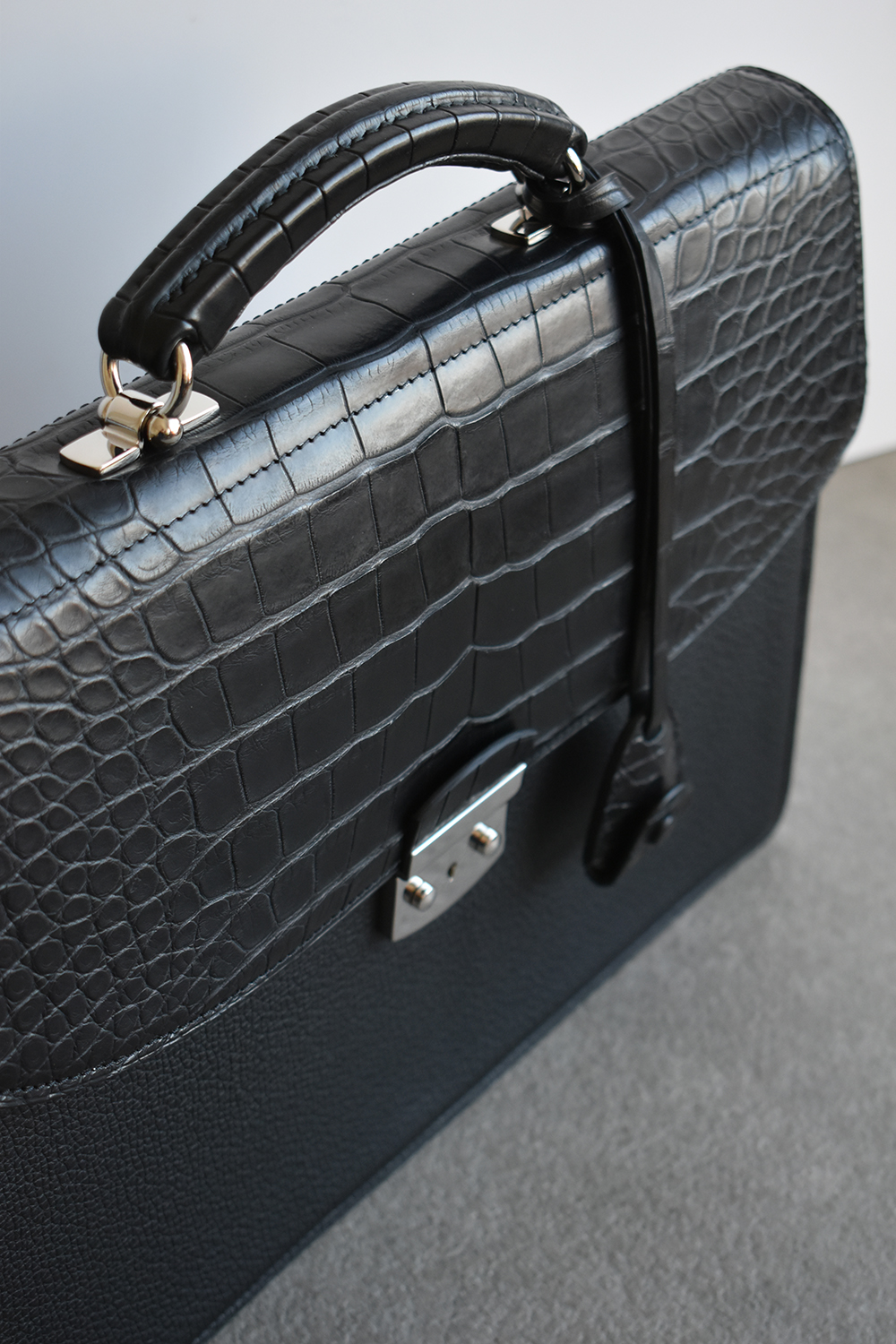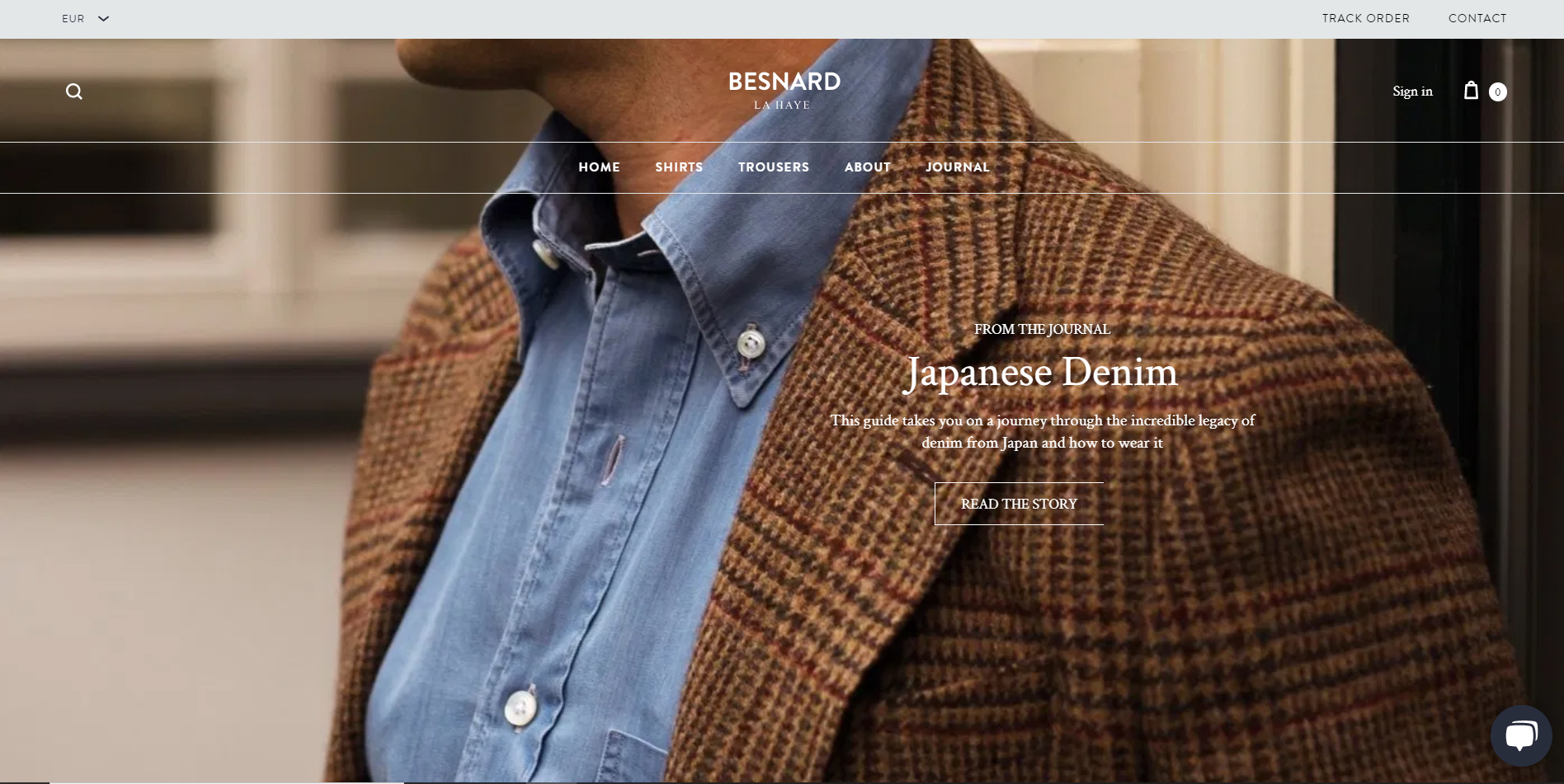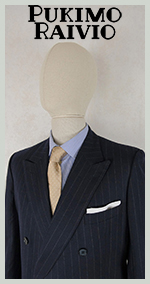An Interview with Benton Nilson
0June 1, 2020 by Ville Raivio
VR: Your age and occupation?
BN: 29 years old, I work in marketing.
VR: Your educational background?
BN: I studied cinema in college.
VR: Have you any children or spouse (and how do they relate to your style obsession)?
BN: nope, single.
VR: …how about your parents’ and siblings’ reactions when your style interest began?
BN: My father’s style influenced my own and we would watch old movies together, which also fueled my interest in tailored clothes and vintage styles. In that way, I think they could appreciate my interest, maybe if not to the degree to which I became interested (obsessed).
VR: What other hobbies or passions do you have besides apparel?
BN: I love films and sports. I’ll watch almost any sport and talk about it with anyone interested. I’m fascinated by the culture that surrounds sports in almost all countries. Basketball is my favorite sport to watch and play, but I think baseball is an aesthetically beautiful game with a fascinating history.
VR: How did you first become interested in clothing, and when did you turn your eyes towards the tailored look?
BN: I was heavily influenced by the movies I watched and I was, naturally, drawn to the older films and the clothes in them. My earliest memory of being consciously aware of the clothes and starting to ask questions about what people were wearing was when I watched Brian de Palma’s Untouchables. The fedoras, the double-breasted suits, the overcoats, and the heavy tweed jackets were all new to me and so different from what I saw in regular life.
Like many kids, I also remember my parents would buy button-down shirts for me to wear on special occasions, but I think unlike a lot of kids, I really enjoyed how special they felt. They were comfortable to wear and just felt “right.”
VR: How have you gathered your knowledge of clothing — from books, in-house training, workshops or somewhere else?
BN: A lot of knowledge about the details in menswear came from books and online forums. But oftentimes, things wouldn’t click for me until I saw it in person. Like the old Brooks Brothers shirts. I read about them, saw them on stylish men like Miles Davis, but when I finally got my hands on a shirt for myself, I finally understood why they were so special.
VR: How would you describe your style?
BN: The easiest way is probably Ivy style, but I really enjoy the entire spectrum of American styles. I love how sporty the American style can be, with button-down shirts, sweaters and sneakers, but also how rugged and practical it can be, with jeans and workshirts. I don’t think you have to be some tough guy on a motorcycle to appreciate a good leather jacket and you don’t have to be a pipe-smoking professor type to enjoy tweed jackets. It might be aspiration in that sense; the idea of being an interesting enough person to match interesting clothes that let you go from an outdoor adventure to a nice dinner without skipping a beat.
The sweater is a great example; for most people I think it brings up images of Thanksgiving or Christmas, as something you wear for more domestic occasions. But the history of sweaters show that they were first created as very practical and hard-wearing garments, meant for people who needed protection against the harsh elements they faced. In my mind, the sweater is a closer kin to a tough leather jacket than some people think and I love them both.
VR: Your profile mentions that you’re very much into vintage clothing. What era or style bent do you enjoy the most?
BN: I’m not sure I can pinpoint an era, that’s part of what I like about the Ivy style, there’s a continuation of ideas. I do, however, enjoy post-war era styles, where I find the lifestyles relatable and before clothing became more synthetic.
VR: Who or what inspires you?
BN: I don’t want to repeat myself, but movies and sports. They show the clothes in the context of the times, in the context of the character’s lifestyle and personality. A lot of times they wear great clothes without any apparent self-consciousness. For me, I prefer them to fashion photography because I like to see how the clothes add depth to a person’s presence and spark my imagination about what kind of life they lead. Of course, that perceived image of that person could be true or it could be false. I think that’s the beauty of it.
VR: What’s your definition of style?
BN: If someone notices your clothes, but it’s not all they notice, I think that’s style.
VR: Finally, what are your tips for finding the gems among flea market rags?
BN: Know what you’re looking for. Don’t try to dig through everything, it’s just too exhausting and there’s too much junk anyway. Know what you’re looking for and be patient. Know what you’re looking for and know what you’re willing to pay. I’ve walked away from items that I loved because I thought it was too much money. I admit I still think about those items sometimes. If you stay truly focused on what you like, you’ll end up buying less anyway.
https://www.instagram.com/benton.down/
Photos: the Nilson archives
Category American style, Interviews, Men of style
An Overview of Ivy League Style with Richard Press
0May 30, 2020 by Ville Raivio
Category American style, Videos
An Interview with Rory Nichols from Made By Nichols
0March 31, 2020 by Ville Raivio
VR: Your age and occupation?
RN: I am 31 years old and my occupation is Owner/Director at Made by Nichols.
VR:Your educational background?
With fellow artisan Yohei Fukuda
VR: Have you any children or spouse (and how do they relate to your leather enthusiasm)?
VR: …and your parents and siblings’ reactions back when you first decided to go for this job?
VR: How did you first become interested in artisanal goods, and when did you turn your eyes towards leather working? Why this material over others?
VR:How have you gathered your knowledge of the trade — from books, in-house training, workshops or somewhere else?
From Nat Boyd I moved on to work at Dunhill London’s bespoke workshop. This is where, I believe, I learned the true level of luxury and handcrafted products. When I joined, there was a small team of master craftspeople all of whom had decades of knowledge and experience of traditional and also modern luxury leather craft. My manager had previously worked for Yves Saint Laurent and Hermès and the two senior craftspeople I was working with had been at Dunhill, previously known as Tanner Krolle, each for more than 10 years. Working with such skilled and knowledgeable artisans was incredible, the focus at the time of my arrival was the manufacturing of their traditional top frame briefcase, ‘The Worsley’. Learning how to make such a product that consists of all aspects of luxury leather crafting from hand burnishing the edge with a burnishing mitten to hand stitching the frame and handle pushed my skills to a new level. I am indebted to the team at Dunhill for the time and knowledge they shared with me.
After my time at Dunhill, I was approached by Simpson’s London who were building a new state of the art factory in London with the intention to reboot the English leather crafting industry. Simpson’s products share many similarities to the products I was making at Dunhill, such as using English bridle hides and hand stitching, so it made for a desirable opportunity. After a year working at Simpson’s I was made senior craftsperson and put in charge of one of their departments, the medium leather goods section where we made briefcases, messenger bags and travel bags. Working at Simpson’s was a fantastic opportunity because they also manufactured products for other luxury brands. This meant the work was varied and gave myself and my team the chance to try out and learn new making techniques.
VR:Please describe how your company was born and what goals you set for yourself in the beginning. How have you been received so far?
VR:Have you any particular style or detail philosophy for your wares?
VR: Who or what inspires you?
VR: Why should Keikari’s readers choose you over other British leather artisans?
RN: When selecting luxury leather goods and accessories it’s always difficult to know who to choose; I’d recommend one of my products over many of the other brandsout there because I can customise any of them to your requirements. None of my designs are set in stone and if you require your own personal pocket insert, material choice or leather choice, my past experience within the industry gives me fantastic access to many world-renowned suppliers as well as unknown gems of which many other smaller brands don’t usually offer. I frequently receive messages from fellow craftspeople enquiring about my suppliers but these are sacred and have taken years to collate, so I do not hand them out.
VR: What’s your definition of style?
RN: Style is all about details and how you edit looks to your personality. In the sector that I have focused my products on, men’s style as well as my own is all about tailored fits set off with accessories, such as watches, shoes, and choice jewellery. The more time I spend around quality products, the more I want my attire to be entirely selected. It’s difficult to be stylish from head to toe everyday but, for me, a decent pair of shoes or boots, combined with my every day jewellery (two silver rings and a single bangle) along with a well-fitted pair of trousers and a woollen top works well.
VR: Finally, have you any tips for identifying quality leather and make?
RN: After spending a long time working with leather as my creative medium, my first characteristic when selecting leather is, how does it feel to the touch? Whether it’s vegetable tanned of chrome tanned, I will always expect the surface to have some kind of wax/oil feel. Dry, rigid skins are a sign of being dried too quickly using heaters or not being left in the tanning drums long enough to properly absorb the dyes. A poor quality leather will almost certainly begin to crack or break far sooner than a well finished, properly tanned hide.
Category Bags and cases, Interviews, Leatherworkers, Quality makers
The $900 Vintage Florsheim Shoe Restoration
0March 14, 2020 by Ville Raivio
Category American style, Footwear, Videos
BESNARD: a Menswear Company
0March 14, 2020 by Ville Raivio
BESNARD is a Dutch menswear company that has its roots back in 1878. That’s when a certain master tailor Albert Besnard set up a shop with a specialisation in court livery. A. Besnard Tailleur plied its trade in The Hague. In the beginning, most of the business came from the nearby Dutch Royal Palace, later on numerous servants and diplomats connected to the regime walked through the door. The times they were a-changin’, though, and Albert had no one to continue or buy the family business, so the store stopped trading after some four decades in business. Fast forward a century, and the master tailor’s great-great-grandson, Victor, found a suit made by the old store. Though Victor Besnard is not an artisan, and his trade is strategy consultancy, he has experience in the field of menswear and from a tailor shop. Thus, the grandson decided to revive the name and set up a business that caters to classic pieces.
As Victor puts it, “I started working in menswear when I was 17 and continued until I started my career as a strategy consultant after college. My time at a luxury multi-brand store sparked my passion for classic menswear, and working at a bespoke tailor resulted in a ‘healthy’ obsession for tailoring and craftsmanship. It wasn’t until long after I started working as a consultant that I missed working with clothing. It was around the same time that I found a bespoke suit made by my great-great-grandfather, at that moment I decided to revive Besnard. It is definitely my ambition to grow the brand to a level where I can make a living from it. Currently, I work 4 days per week in consulting to cover the investment for new products and pay the rent. The rest of my time is dedicated to Besnard.”
BESNARD is run by one man, with occasional help from his wife, and former colleagues in tailoring helped with patterns and samples in the development phase. The company’s target group are men aged 30 to 50 who appreciate craftsmanship or certain designs or details. Trust is an important value for Victor Besnard: in his mind, clothes should be simple in design, have a high quality, and last a long time. They shouldn’t change too much in model or fit from year to year. Countless startup clothing companies have risen up in the 2000s, and standing out from so many others is a challenge. One option is to produce RTW-pieces which take their inspiration and features from bespoke tailoring.
Says Victor: “movies and pictures from ’50s and ’60s are a tremendous inspiration for me. It is fascinating to observe how men dressed at those times. I am a big fan of the ’60s Ivy League look and the design of my button-down shirts was heavily inspired by vintage OCBDs. However, my fit is a bit slimmer to make it more contemporary. In addition, I am very passionate about classic menswear and tailoring. I noticed that the bespoke suits worn by movie stars such as Cary Grant and Sean Connery had a certain masculinity in them. One of the reasons is the higher waist of their trousers, which visually lengthens the legs and shortens the torso, leading to a more masculine sense of proportion. This is something I also wanted to achieve with my trousers. Finally, I am an admirer of the soft unconstructed Neapolitan tailoring. Developing a tailoring line is a time consuming and costly investment, so unfortunately that must wait. This month I am launching a line of untipped ties with hand-rolled edges, in grenadine, shantung and hand-printed silks.”
BESNARD has chosen its manufacturers according to their quality and specialisation. As an example, only some shirt factories use English seams (also known as single-needle tailoring) and some tie makers offer hand-rolled edges. The company also uses unique designs which limits the range of white label manufacturers. The fabrics and materials come from mills which also supply tailors and high-end factories. As for the designs and value, the designer opines: “I think that passion is an important part which makes BESNARD different. The devil is in the details, and I care about every detail. Because little things can make a huge difference; the position of the buttons to ensure a nice collar roll, the difference between the front rise and back rise of a trouser pattern or simply the balance of the width of a shirt placket and the amount of millimeters the stitching is from the edge.”
Category Quality makers, Web stores
Copyright © 2013 Ville Raivio


